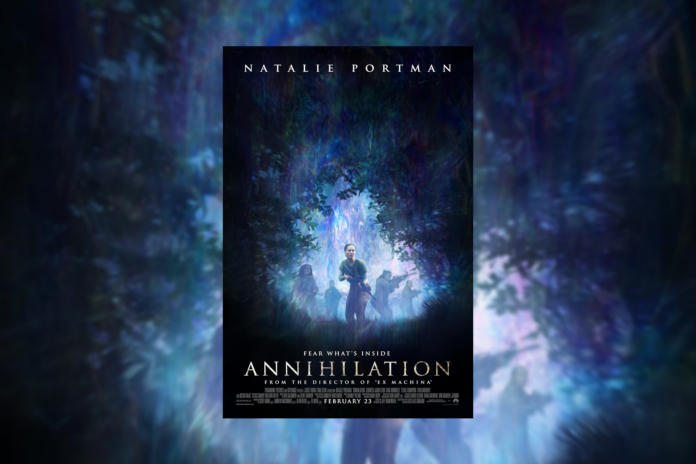
“Annihilation” features a largely female cast and is something that 2016’s all-female remake of “Ghostbusters” could have been: dramatic rather than comedic, meticulously planned rather than ad-libbed, and kept entirely out of Paul Feig’s untalented hands.
The story centers around a mysterious anomaly known as “the Shimmer” that emanates from a beach in the southern United States, threatening to spread across the globe. Teams of soldiers have been sent in to investigate a lighthouse that seems to be the source of the energy field, but only one has ever returned: the protagonist’s husband Kane (played by Oscar Isaac), who is suffering from memory loss and multiple organ failures.
Desperate to find out what happened to him, Lena (Natalie Portman) joins a team of scientists heading into the Shimmer and begins to experience its effects firsthand. Neither she nor the other members of the group can recall the first few days spent in the anomaly. Causing several of them to begin to physically change from humans into something different and the ones that don’t change are attacked by animals with bizarre, unnatural mutations that look like they’re ripped straight out of H. R. Giger’s “Necronomicon.”
Although it boasts one of the best and scariest monster designs of any recent horror movie, “Annihilation” doesn’t rely on cheap jumpscares to instill a sense of fear— the atmosphere is saturated with an ambient dread. One particularly well-directed scene comes about halfway through the film, during an outdoor conversation between Natalie Portman and Jennifer Jason Leigh in the middle of the night: the two main characters are framed in such a way that a large amount of the screen is taken up by a pitch-black forest backdrop, which creates an uneasy feeling that something could appear at any moment.
Despite the steady build-up, a full reveal of the monster doesn’t happen until later— the scene ends with an out-of-focus shot of something that sort of looks like a bear, but not quite. The lack of a satisfying payoff keeps the atmosphere tense and the audience on the edge of their seats, and the increasing strangeness of the team’s surroundings as their minds slowly break apart keeps the film compelling without the need for loud noises and sudden pop-up visuals.
“Annihilation” is what happens when a director is allowed to make a science fiction movie without being beaten over the head by activists who constantly call for increased representation of women and minorities in film. It’s an entertaining and engaging movie with excellent production quality and a well-written story that deftly handles themes of death and disease by making the phenomenon of the Shimmer an allegory for the effects of cancer on the human body. You’ll enjoy it on a surface level if you like sci-fi horror, and you’ll appreciate its subtler qualities if you’re a film buff. It’s worth watching.
For questions/comments about this story, email arts@thewhitonline.com or tweet @thewhitonline.





